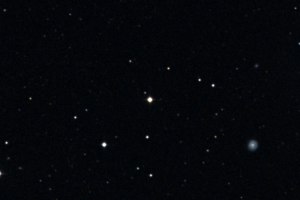Two mini-Neptuns in orbital resonance around TOI-1803 discovered and described in the paper: “A joint effort to discover and characterize two resonant mini Neptunes around TOI-1803 with TESS, HARPS-N and CHEOPS” of T. Zingales (UniPd/INAF-OAPd))

With over 2.600 exoplanets discovered, NASA’s Kepler satellite holds the record for the mission with the highest number of exoplanets found. The Kepler mission continued with the Kepler/K2 extension, redefined after technical failures prevented the telescope from maintaining its pointing. Among the many discoveries made possible by Kepler/K2 is evidence that one of the most common types of planets in our Galaxy is that of mini-Neptunes—planets with a mass approximately 17 times that of Earth and a radius about four times Earth’s radius. However, the number of planets discovered in this category remains relatively limited.
Evolutionary models suggest that mini-Neptunes and super-Earths (rocky planets with a mass of up to about ten Earth masses) share a common origin. These two classes of exoplanets, both absent in our Solar System, likely result from the loss of their primordial outer atmosphere due to photoevaporation (loss of atmosphere heated by stellar radiation) or mass loss driven by energy emitted from the planet’s core. The limited number of mini-Neptunes discovered and confirmed to date makes it challenging to confirm this theory.
The article “A joint effort to discover and characterize two resonant mini-Neptunes around TOI-1803 with TESS, HARPS-N, and CHEOPS“ by astrophysicist T. Zingales (University of Padua, INAF – Padua Astronomical Observatory) reports the discovery and characterization of two mini-Neptunes orbiting the star TOI-1803 (TYC 2526-1545-1), a 1.4-billion-year-old star with a mass of 0.76 solar masses. The discovery is the result of a joint effort between two projects dedicated to the study of exoplanets: GAPS (Global Architecture of Planetary Systems) and the CHEOPS Science Team. Observations were conducted using the European Space Agency’s CHEOPS satellite, NASA’s TESS satellite, and the HARPS-N spectrograph mounted on the Telescopio Nazionale Galileo. TOI-1803 hosts two mini-Neptunes: TOI-1803 b, with a mass of 10.3 Earth masses, a radius of 2.99 Earth radii, and an orbital period of 6.29 days; and the outer planet, TOI-1803 c, with a mass of 6 Earth masses, a radius of 4.29 Earth radii, and an orbital period of 12.89 days.
These two planets exhibit noteworthy characteristics. First, the two planets are currently close to a 2:1 orbital resonance, likely achieved after a migration period during the planetary system’s formation. However, their orbits are not yet perfectly stable. Ground-based observations measured a transit time variation (the delay of the time the planets pass in front of their star) of 10 and 40 minutes for planets b and c, respectively. Such delays result from gravitational interactions between the known planets and possibly with other planets in the system. Additionally, TOI-1803 c may host an extended atmosphere suitable for spectroscopic observations with next-generation instruments, such as the James Webb Space Telescope, aimed at characterizing its composition. Astronomers A. Maggio and D. Locci from INAF – Palermo Astronomical Observatory also contributed to the study.
The cover figure (click here for the full view) shows an optical band image of TOI-1803 obtained during the Digitized Sky Survey 2 observation campaign.
Mario Giuseppe Guarcello
Follow MarioSpiegaCose on Instagram () , Facebook (), Youtube (), and X ()
Follow the Astronomical Observatory of Palermo on Facebok and on Instagram
Subscribe the Youtube channel of the Astronomical Observatory of Palermo
